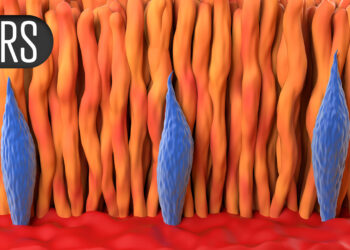TOPLINE:
Osteoporosis was prevalent in 41% of patients with systemic lupus erythematosus (SLE). Factors such as lupus nephritis classes III and IV, U1-ribonucleoprotein (RNP) antibodies, and longer disease duration were associated with lower areal bone mineral density (BMD), and active lupus nephritis was associated with osteoporosis.
METHODOLOGY:
- Researchers analysed data of a subcohort of patients from a prospective observational study to identify factors associated with BMD and the risk for osteoporosis.
- They included 110 patients with SLE (mean age, 48 years; 92% women) from a hospital in Berlin between July 2015 and January 2022 who fulfilled the American College of Rheumatology/ European League Against Rheumatism 2019 SLE classification criteria and had current or prior glucocorticoid treatment.
- The analysis included SLE disease activity and a standardised bone health assessment with the DEXA scan and trabecular bone score measurement according to national guidelines. BMD- and osteoporosis-related factors were assessed.
- The following three co-primary endpoints were assessed:
- Areal BMD, expressed as the lowest DEXA-derived T score at the lumbar spine (L1-L4), total hip, or femoral neck
- A composite osteoporosis outcome (a femoral or lumbar spine T score ≤ -2.5 and/or history of a major fragility fracture and/or antiosteoporotic treatment)
- The prevalence of fragility fractures (any, vertebral, and non-vertebral).
TAKEAWAY:
- Overall, 41% and 35% of patients with SLE had osteoporosis and lupus nephritis, respectively.
- Factors significantly associated with lower areal BMD included lupus nephritis classes III and IV (P = .025), U1-RNP antibodies (P = .009), higher C-reactive protein levels (P = .015), and longer disease duration (P = .001).
- Clinical remission (P = .033) and higher Health Assessment Questionnaire scores (P = .009) were positively correlated with areal BMD.
- Active lupus nephritis was strongly associated with osteoporosis in patients with SLE (odds ratio [OR], 7.42; P = .027), along with other factors such as older age (OR, 1.06; P = .003) and lower Health Assessment Questionnaire scores (OR, 0.29; P = .005).
IN PRACTICE:
“The identification of SLE-specific risk factors allows us to recognize patients at particular high risk for OP [osteoporosis]. This prompts us to suggest a thorough osteoporosis check-up in patients with high CRP [C-reactive protein], LN [lupus nephritis], or U1-RNP-antibodies,” the authors wrote.
SOURCE:
This study was led by Edgar Wiebe, Charité – Universitätsmedizin Berlin, corporate member of Freie Universität Berlin and Humboldt-Universität zu Berlin, Department of Rheumatology and Clinical Immunology, Charitéplatz 1, Berlin, Germany. It was published online on July 28, 2025, in Arthritis Research & Therapy.
LIMITATIONS:
This monocentric cohort study primarily involved White Caucasians, thereby limiting the generalisability of the findings to other patient groups. A potential selection bias may have resulted in overrepresentation of patients with more severe disease courses who were at a high risk for osteoporosis. The cross-sectional design limited the ability to establish causality between identified factors and outcomes.
DISCLOSURES:
Open access funding was enabled and organised by Projekt DEAL. The prospective observational study received a joint funding from AbbVie, Amgen, Alfasigma, Almirall, Biogen, BMS, Chugai, Fresenius Kabi, Galapagos, GA Generic Assays, GSK, Hexal, Horizon Therapeutics, Lilly, Medac, Mundipharma, Novartis, Pfizer, Roche, Sanofi-Genzyme, and UCB. The authors declared having no conflicts of interest.
This article was created using several editorial tools, including AI, as part of the process. Human editors reviewed this content before publication.
Source link : https://www.medscape.com/viewarticle/these-markers-may-predict-risk-bone-loss-sle-2025a1000kdj?src=rss
Author :
Publish date : 2025-08-04 12:00:00
Copyright for syndicated content belongs to the linked Source.














